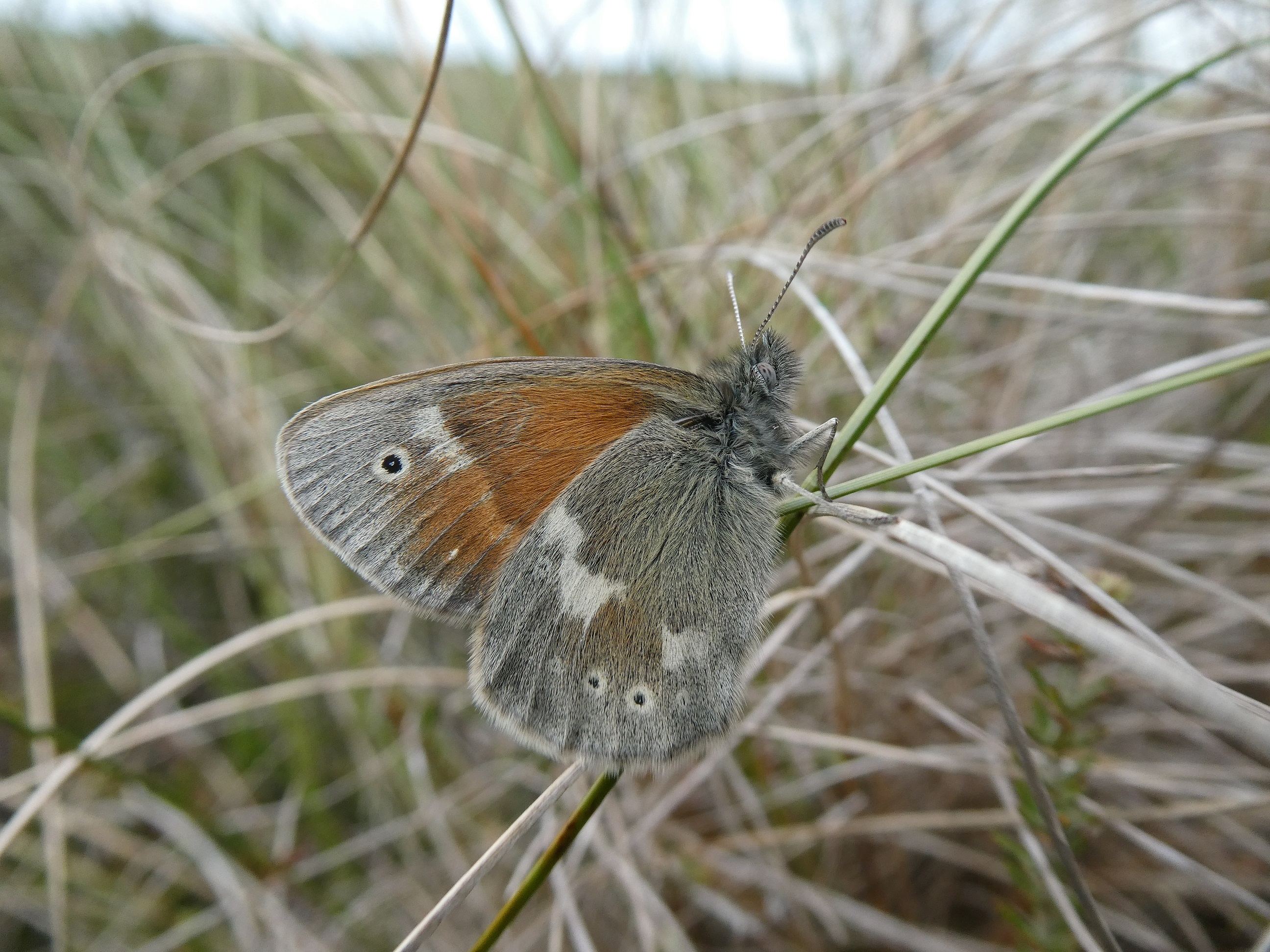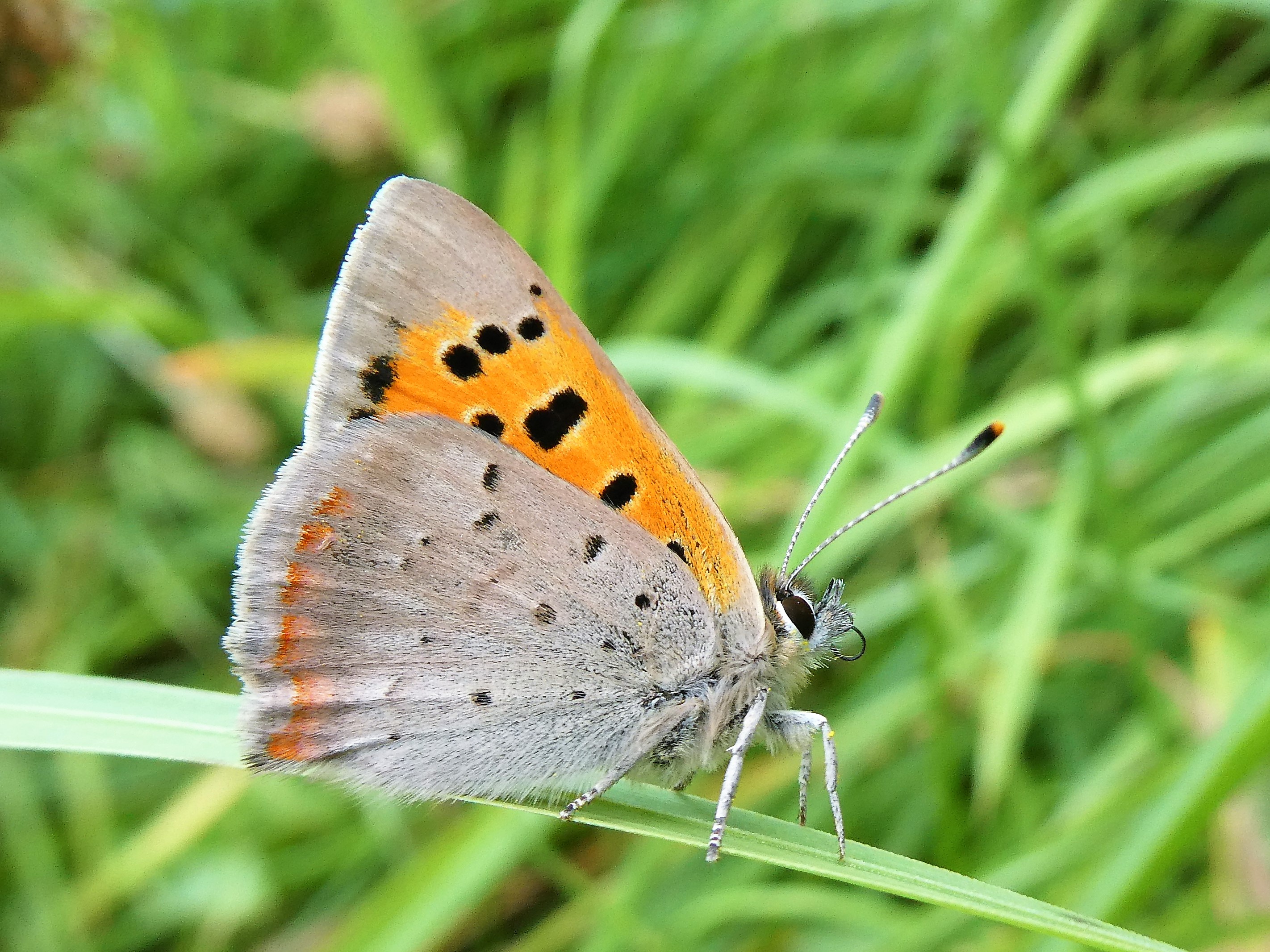WHERE DID OUR BUTTERFLIES LIVE WHEN IRELAND WAS COVERED IN DENSE FOREST?
Most of Ireland’s butterfly species and many moths breed on grasslands. Only one shade-tolerant butterfly, the Speckled Wood, can breed on foodplants growing in shady conditions. Even species that breed in woods do not breed under the heavy shade where it is too dark and cold to support larvae.
In the wildwood that blanketed Ireland, how did these species survive?
The pollen record shows that Ireland had tundra vegetation for around 1,000 years after the most recent glacial period which ended 11,000 years ago. Stunted willow and grasses occurred and arctic wildflowers like Mountain Avens flowered in brief arctic summers. Around 10,000 years ago the climate warmed. A succession of shrubs and early colonising tree species appeared, especially juniper and birch. Around 9,000 years ago Common Hazel and Scots Pine appeared and dominated for around 3,000 years. From 8,000-6,000 years ago, oak and elm with ash and yew developed. The first farmers appeared about 6,000 years ago. From 4,500 years ago the first major human impact on the country’s forests began to become evident. By the Early Christian period, around 1,500 years ago, the impact was very evident and by early Medieval times, very little woodland remained.

However, thousands of years of dense, countrywide woodland cover would have made Ireland totally unsuitable for almost all of Ireland’s butterflies-probably only the Purple Hairstreak would have survived in closed-canopy woodland. How, then, did Ireland’s grassland butterflies survive? The answer that has been advanced is that their populations would have been very low, confined to areas that trees could not grow, such as bogs, unstable sand dunes, river banks and on thin soils in upland areas. This view is borne of the necessity to explain how the butterflies survived rather than the suitability of these habitats for the range of species that occur today. Lightning strikes that burned woodland and generated grassland mixed with early successional woodland habitats have also been suggested as providing the habitat needed for survival.
Recently, the view that the post-glacial landscape of Ireland and temperate-zone Europe was heavily wooded has been challenged. Dutch ecologist Dr Frans Vera’s book Grazing Ecology and Forest History (translated into English in 2000) provides an insight into what woods may have looked like. The picture he paints is intriguing. If accurate, it would explain a great deal about how butterflies, moths and many other invertebrates manage to exist in Ireland, Britain and in temperate Europe.
Vera puts forward the view that the landscape was far more open than many believe. Temperate zone Europe, Vera maintains, would have been characterised not by ubiquitous species-poor closed-canopy forest – as is commonly thought – but by a more open form of wood-pasture driven by grazing animals. Europe would, for the most part, have been a dynamic, shifting landscape of open-grown trees, emerging scrub, grazing lawns, groves and thorny thickets. An open wooded landscape like this, with grassy areas forming large clearings, would be ideal habitat mosaic for our butterflies. Butterflies and moths really like the warmth and shelter of wood edges, rides and clearings. Even the bog specialist, the Large Heath, will breed on a bog with scattered trees and scrub.

Vera argues that Europe had a large population of animals such as Beavers, Red and Roe Deer, Elk, Wisent and Wild Boar-similar to the population sizes seen in Africa today. These animals created open areas by trampling, digging, grazing, browsing, de-barking, felling trees and damming rivers (Beavers).
While there are debates and challenges regarding Vera’s theories, there is evidence that he may be accurate about the type of landscape that may have existed before human impact became important.
SAPROXYLIC BEETLES
Dr Keith Alexander, an independent specialist in saproxylic beetles (invertebrates that are dependent on dead or decaying wood (or dependent on other organisms that are themselves dependent on dead wood)), argues that sub-fossil saproxylic beetle evidence has been interpreted – wrongly – to describe a landscape that was, in the past, predominantly closed-canopy forest. In his view, the beetle evidence – when properly analysed – clearly shows the opposite: a landscape characterised by open-grown trees.
For example, species like Dryophthorus corticalis and Prostomis mandibularis, one of the commonest beetles of the Early Holocene (12,000-7,000 years ago), are highly specific and require large girth tree trunks containing volumes of decayed heartwood. Closed canopy conditions do not produce such trees.
Overall, says Alexander, sub-fossil evidence for the early Holocene indicates that 28% of the sub-fossil beetle fauna were grassland and scrub species; 13% arboreal; and 47% wood decay. In the late Holocene, 44% were grassland & scrub species; 11% arboreal; and 34% wood decay. The composition shows very low levels of shade-demanding arboreal species – so while trees are well-represented, shade is clearly scarce. The Late Holocene records indicate increased open grassland and scrub, as well as the presence of early successional mosaic species, which would be expected as humans re-colonised the land and agriculture developed. For both the Early and Late Holocene, predominant open wood pasture is consistent with the data; the closed-canopy forest is not.
CHALK GRASSLAND SNAILS
A similar picture emerges from the fossil evidence of chalk grassland snails. In the late 1990s, just as Vera was completing his thesis, environmental archaeologist and conchologist Dr Mike Allen, a lecturer at Oxford University and research fellow at Bournemouth University, began questioning the prevailing archaeological belief that the chalk grasslands around Stonehenge, Avebury, Dorchester and Cranborne Chase in Wessex were blanketed in postglacial woodland.
The sub-fossil snail record, Allen realised, pointed, instead, to a landscape of open grassland with open-grown fruiting trees and shrubs. It is his work that has informed the stunning visual displays depicting the evolution of the chalk landscape in the new museum at Stonehenge. Herds of grazing and browsing animals kept these savannahs (a savannah is a mixed woodland-grassland ecosystem with an open canopy that allows sufficient light to reach the ground to support an unbroken herbaceous layer consisting primarily of grasses) open, providing habitat for the snails; and it was this open landscape supporting a huge biomass of animals that attracted the early human populations to the area.
LICHENS
The lichenologist Dr Francis Rose, a former lecturer at King’s College, London, had scratched his head over closed-canopy theory from the 1970s until his death in 2006. His work is largely concerned with epiphyte forest lichens and for thirty years he studied them, in particular, in the New Forest (Hampshire, southern England). He noticed that very few species of lichen – or, indeed, mosses or liverworts – could be found inside dense stands of trees. Almost all require light and are found on either open-grown trees or trees along rides and the edges of glades or ‘lawns’.
The survival of relict species of moss and arctic-alpine plants – typical of the habitat of the last glacial period (i.e. before trees returned to our landscape with the warming climate) – on common land in Denmark grazed by horses also convinced Rose of the role of herbivores in keeping areas open of tree cover. Similar Devensian/Midlandian era (last glacial period) habitats in Norfolk, he noted, were vanishing with the abandonment of traditional grazing, and small fen plants like northern bog sedge and butterwort, and various orchids and subarctic type bryophytes were disappearing with them.
CONCLUSIONS AND IMPLICATIONS FOR OUR BUTTERFLY POPULATIONS
While Vera’s views have been challenged there is no doubt that such a situation of open woodland is beneficial to butterflies. Grazing by large herbivores is very important for the maintenance of these habitats and many butterflies would disappear if grazing ceased. Grassland butterflies in Ireland generally dislike large, unsheltered open areas even when these grasslands contain an abundance of nectar and larval foodplants. In such species-rich grasslands, it is among scrub that large butterfly populations will be found.

A butterfly gardener should take account of the value of maintaining a range of habitat types in an area, with native, mature, open woodland, dense scrub patches, scattered scrub and trees, open exposed ground and flower-rich grassy areas throughout. For a re-wilding project, native grazers, as well as domestic livestock, reintroduced Wild Boar and Beaver may be ideal to restore the landscape to something resembling its state before humans burned and felled woodland.

